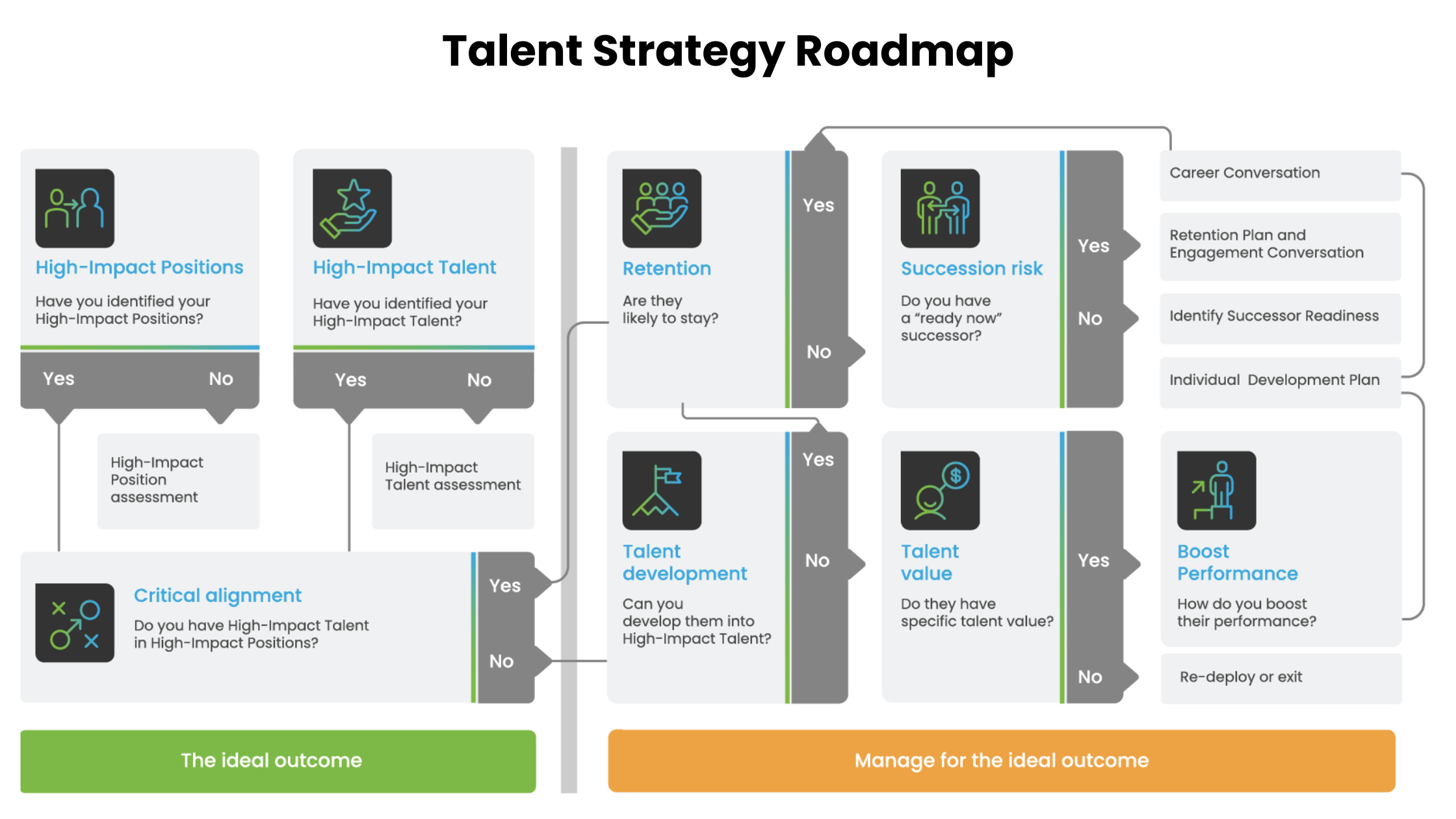If you’re responsible for HR in a mid-sized company, you face a unique set of challenges that differ significantly from those experienced by large companies. While larger organizations have the resources to focus on talent management, mid-sized companies often struggle to prioritize talent management initiatives like talent strategy.
In this article, we’ll explore the unique HR challenges faced by mid-sized businesses, why a talent strategy is essential, and how to develop one that aligns with your business goals. Whether you’re an HR department of one or part of a larger team in a growing, mid-sized business, this guide is for you.
HR challenges in mid-sized businesses: Barriers to effective talent strategy
Limited time for talent strategy
HR professionals in mid-sized companies often spend only 10% of their time on strategic initiatives because the majority of their day is consumed by immediate operational issues. This lack of time for long-term planning can leave your company without a clear path for talent development and workforce optimization.
Generalists HR teams
In mid-sized companies, HR teams are typically made up of generalists who handle everything from payroll to compliance. However, these teams often lack specialized skills in data analytics, project management, and talent management, which are critical for developing and implementing a high-impact talent strategy.
Resource allocation
Did you know that on average, 99.5% of available resources in mid-sized businesses are directed toward sales and operations? HR departments get what is leftover. As you’re probably experiencing, limited HR resources (both budget and skills) make it difficult to implement strategies for attracting, retaining, and developing talent.
Why your business needs a talent strategy to succeed
Talent strategy isn’t just an HR function—it’s a business imperative. To address these challenges, you need to convince your executive team that investing in the right talent strategy is worth the investment.
A well-designed talent strategy offers two compelling outcomes that should resonate with any business leader:
- Sustained high performance: Aligning talent processes with business goals ensures consistent performance across teams and individuals.
- Availability of High-Impact Talent: Ensuring the right talent is in the right roles at the right time prevents a cascade of negative events that usually result in employee burnout and missed business opportunities.

For HR managers in mid-sized businesses, a talent strategy acts as a roadmap for bridging operational needs with long-term growth goals.
A step-by-step guide to building an effective talent strategy
Executive buy-in is non-negotiable for the success of a talent strategy, but convincing leaders to allocate time and resources can be challenging.
Here’s how to overcome this barrier:
1. Leverage the Talent Strategy Roadmap
Peopletree Group’s Talent Strategy Roadmap is a powerful visual aid when discussing talent strategies with executives. The roadmap gives executives a clear understanding of the full talent journey and helps HR managers identify gaps that need addressing. Ask the sequence of questions in the roadmap in your next executive meeting, starting with: “Have we identified our High-Impact Positions?” and “Do we know who our High-Impact Talent is?”

2. Evaluate with clear criteria
Encourage your executive team to evaluate the answers to these questions based on:
- Confidence in the answers: Are we sure about the data?
- Consequences of being wrong: What’s at stake?
- Consensus across leadership: Is everyone aligned?
- Alignment of processes: Are our systems and strategies built to ensure we always have High-Impact Talent in High-Impact Positions?
3. Identify gaps in current processes
Once you’ve reviewed the roadmap, use it to identify weaknesses in your current talent processes. These gaps will become the focus areas of your new talent strategy.
Actionable next steps for implementing a talent strategy
- Download the Talent Strategy Roadmap: Use it in your next leadership meeting to highlight gaps and initiate discussions.
- Align with business goals: Ensure your talent strategy is tied to your business objectives.
- Train your managers: Equip managers with the tools to identify and develop High-Impact Talent.
By taking these steps, you’ll demonstrate the value of a well-structured talent strategy to your executive team.
Why you should regularly revisit your talent strategy
Developing a talent strategy is not a once-off occurrence. As business objectives change, so should your talent strategy. Use the Talent Strategy Roadmap to guide quarterly talent alignment discussions with your executives.
Get the Talent Strategy Roadmap
Ready to align your talent strategy with business goals? Download the Talent Strategy Roadmap now!
Struggling with Talent Strategy?
Shift your focus from transactional tasks to high-value strategic talent initiatives.







